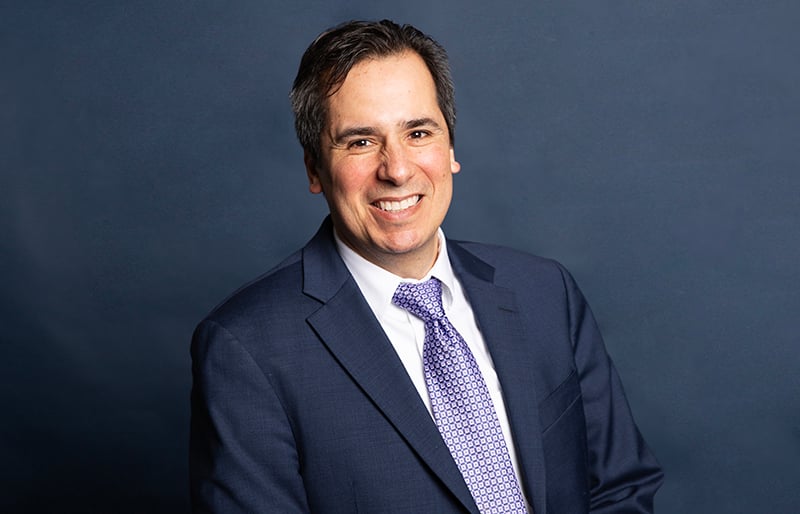Well, Deep Throat got away. I thought I had him—God knows all the clues led to him. But could I get him to admit it? How would Robert Redford do it? Maybe I should have gone out to his house in Fairfax to see the expression on his face when I asked him. Instead I called him, engaged him in some small talk (“What kind of cigarettes do you smoke? … Oh, you don’t smoke.”), and tried to surprise him: “Are you really Deep Throat?”
Urbane and cool as ever, he answered: “I can tell you that it was not I and it is not I.”
The man who got away is W. Mark Felt, the handsome, engaging, distinguished former associate director of the FBI. In the June issue, you may recall, we speculated that Deep Throat, the mysterious source who helped Bob Woodward and Carl Bernstein uncover so many of their exclusive Watergate stories, was not some well-known White House insider like Charles Colson or Leonard Garment but someone in the FBI who had access to all the information as it was developed, who had a motive for leaking it, and who had ways to get it to Woodward without being caught. The trail, we said, pointed to someone like Mark Felt.
Following the trail, we learned that Mark Felt (born August 17, 1913, in Twin Falls, Idaho; BA University of Idaho, LLB George Washington University) had gone to work for the FBI in 1942. He served at FBI headquarters here for several years and then at a number of posts such as New Orleans, Salt Lake City, and Kansas City. In 1962 he returned to FBI headquarters and in 1964 was named head of the FBI’s Inspection Division. In 1965 he become an assistant director to J. Edgar Hoover. When Hoover died in May 1972, L. Patrick Gray took over as FBI director and Felt was named associate director—the number-two job in the bureau. Felt stayed until June 1973, when he parted company with acting FBI Director William Ruckelshaus.
So Felt was the number-two man in the FBI during the crucial Watergate period. During the FBI investigation, the agent-in-charge, Charles Nuzum, sent his findings to the head of the FBI’s Investigative Division, Robert Gebhardt, who sent everything to the associate director, Mark Felt. Felt saw everything from the Investigative Division and from all other FBI divisions before it went to Pat Gray. From the break-in on June 17, 1972, until June 1973, when the FBI investigation was pretty well completed, Felt was the key control point for FBI information.
Woodward, in All the President’s Men, first mentions Deep Throat on page 72: “The man’s position in the Executive Branch was extremely sensitive. He had never told Woodward anything that was incorrect. It was he who had advised Woodward on June 19 that Howard Hunt was definitely involved in Watergate.” Felt was one of the few people anywhere in Washington who would have known that two days after the break-in.
What about Deep Throat’s knowledge of what was going on inside the White House during the Watergate investigation? How could Mark Felt know that? In fact, one former White House aide had told us that he didn’t think Deep Throat could be anyone but a close-in White House assistant—an Alexander Butterfield or a Fred Fielding. But the White House man conceded that someone from an investigative agency who had good White House contacts could have been Deep Throat. We asked a former high FBI aide about this. He said, “Felt would have had good White House contacts before Watergate. Deke DeLoach was the Hoover aide who always was closest to the White House. When DeLoach retired in 1970, much of the White House liaison responsibility went to Felt. There was a lot of direct contact between the FBI and the White House—there always has been.” So it’s not difficult to visualize a Mark Felt on the phone every day with his White House contacts, talking about how the FBI investigation was coming and how the White House was reacting.
What about motive? In the June issue, we speculated that the old Hoover people at the FBI might have wanted to leak Watergate material to hurt FBI Director Gray and President Nixon, who were bent on tearing down the Hoover organization. Asked about this, a former top Justice Department official said: “Maybe it was revenge. But I think it was ambition, too. I can see Mark Felt as Deep Throat. He had all the information, and he badly wanted to be the director. He had enough contact with the press that he might have tried to use his Watergate information to hurt Gray and to curry favor with an important newspaper like the Post. In fact, you ought to look into why Felt left the FBI so quietly in June of 1973. Leaks may have had something to do with it.”
What about getting the information to Woodward? In All the President’s Men, Woodward described how he would move a flower pot on his apartment balcony if he wanted a meeting, and how Deep Throat would mark Woodward’s copy of the New York Times, which was delivered before 7 AM, if he wanted a meeting. Then, after taking two or more taxis and walking, Woodward would meet Deep Throat in an underground parking garage. “How like the FBI mentality,” our Justice Department source said. “That’s the way they work—marking newspapers and meeting in underground garages. They also know what bars you can meet in without being seen.” (Deep Throat once asked Woodward to meet him at a bar. “None of my friends, none of your friends would come here,” he told Woodward. “Just a sleepy, dark bar.”)
“Then, too,” the Justice man said, “Felt could have gone out at all hours of the morning to meet Woodward without arousing any suspicion. Felt’s wife would have thought nothing of it. Felt could have had a trusted FBI aide helping him too—marking the newspaper and the like.”
And Felt’s FBI position could have strengthened Woodward’s desire to protect Deep Throat–by all accounts, he has been extraordinarily careful not to give any clues as to who his source was. An editor at the Post told us: ‘Woodward disguised Deep Throat. Woodward tried not to lie, but he tried to keep people off the track as much as possible. For instance, Woodward made a lot of Deep Throat smoking cigarettes, but I had the feeling that Deep Throat doesn’t smoke.” Obviously Woodward had plenty of reason to disguise a Felt-type Deep Throat—if the FBI source for the Post’s Watergate investigation were revealed, it could look like the FBI was using the Post and it also would detract from the picture of two young reporters out knocking on doors to find out all by themselves who was behind Watergate.
So you can see how we might have thought we had solved the mystery of Deep Throat. But we asked Mark Felt and he said no. Actually, Felt said: “I don’t think it will ever be resolved whether it was an actual person or a composite. . . . Very few people had access to all this information—some of it was available only at the FBI, some only at very high levels in the White House . . . . I don’t see that even the White House had all that information. Though possibly an Attorney General, possibly Kleindienst.”
Kleindienst? Richard Kleindienst? Watch this space for further details.

















